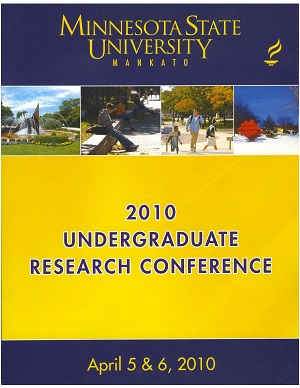Antimutagenic Role of Cinnamaldehyde and Vanillin with Guanosine
Location
CSU Ballroom
Start Date
5-4-2010 10:00 AM
End Date
5-4-2010 12:00 PM
Student's Major
Chemistry and Geology
Student's College
Science, Engineering and Technology
Mentor's Name
Danae Quirk Dorr
Mentor's Department
Chemistry and Geology
Mentor's College
Science, Engineering and Technology
Description
Cinnamaldehyde and vanillin, compounds in cinnamon and vanilla respectively, have shown the ability to induce repair of mutations in DNA. DNA is a double helix shaped macromolecule consisting of complimentary base components; adenine and thymine, and cytosine and guanine. Mutations in DNA occur when the sequence of the bases change. Changes in the DNA sequence can lead a cell to become cancerous. This focus of this research was the synthesis of the possible products of the reaction that cinnamaldehyde and vanillin undergo with guanosine. These products will be used to determine how these compounds found in our food can induce the repair of mutated DNA.
Antimutagenic Role of Cinnamaldehyde and Vanillin with Guanosine
CSU Ballroom
Cinnamaldehyde and vanillin, compounds in cinnamon and vanilla respectively, have shown the ability to induce repair of mutations in DNA. DNA is a double helix shaped macromolecule consisting of complimentary base components; adenine and thymine, and cytosine and guanine. Mutations in DNA occur when the sequence of the bases change. Changes in the DNA sequence can lead a cell to become cancerous. This focus of this research was the synthesis of the possible products of the reaction that cinnamaldehyde and vanillin undergo with guanosine. These products will be used to determine how these compounds found in our food can induce the repair of mutated DNA.
Recommended Citation
Taylor, Katelyn. "Antimutagenic Role of Cinnamaldehyde and Vanillin with Guanosine." Undergraduate Research Symposium, Mankato, MN, April 5, 2010.
https://cornerstone.lib.mnsu.edu/urs/2010/poster-session-A/11



